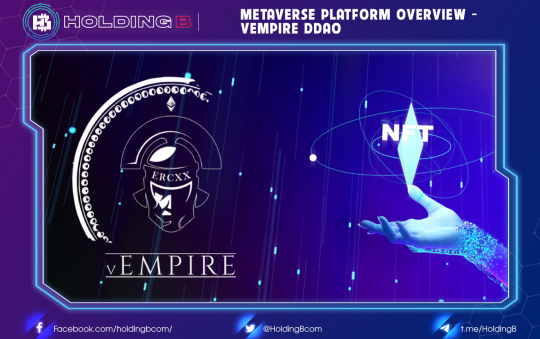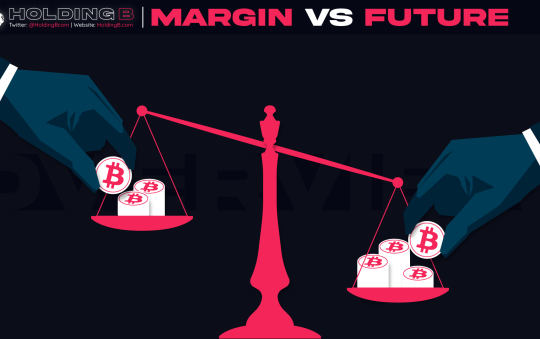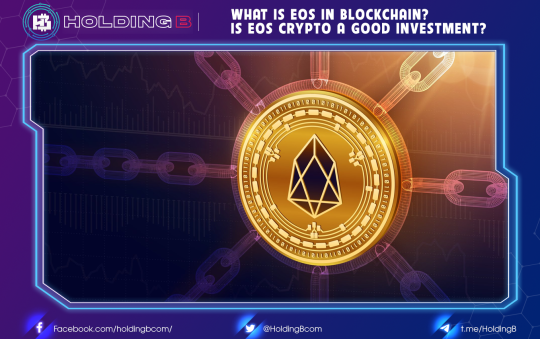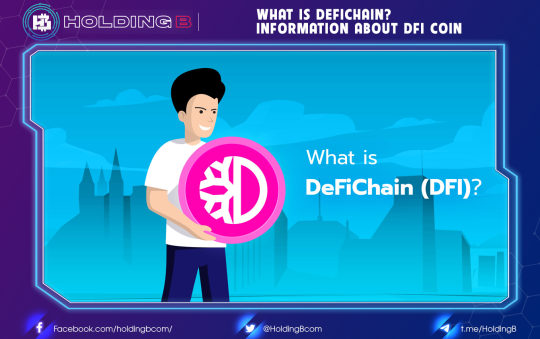Definition
Solana is a crypto computing platform that aims to achieve high transaction speeds without sacrificing decentralization. It employs a bundle of novel approaches, including the “proof of history” mechanism. Solana’s native cryptocurrency is SOL, which is used to pay transaction fees and for staking . It also gives holders the right to vote in future upgrades.
What makes Solana unique?
When Bitcoin was invented more than a decade ago, it solved a really tricky problem: how to make it possible for strangers anywhere in the world to make financial transactions over the internet without a payment processor like Visa or PayPal in the middle.
The technology that makes decentralized transactions possible — and which created the whole universe of cryptocurrencies we now know — is called a blockchain
But blockchains typically have one major downside compared to centralized networks like the ones credit-card companies use: they’re slow. As of August 2021, Ethereum typically processes fewer than 15 transactions per second, compared to tens of thousands for Visa’s network.
Solana is one of many new crypto solutions aiming to make crypto networks faster and more scalable. It uses a suite of clever technologies, including a novel mechanism called “proof of history.”
Highlights of Solana
Support for many programming languages: you can develop Solana in popular languages such as C, C++, Rust… with flexible virtual server integration. With popular programming languages that help attract developers to build on the ecosystem.
Superfast block generation and transaction speed: The network can support 65,000 TPS, which can be easily scaled through the enhancement of Leaders hardware. Currently, there are more than 600 Validators globally.
Low Transaction Fees: Unexpectedly, Solana’s transaction fees are quite low. Estimated $10 for 1 million transactions. Thanks to the use of the PoS algorithm, Solana’s transaction fee is only $0.00001, much lower than other networks like Ethereum.
Latency: About 600ms-800ms ~ 1 second
Scalability: Solana currently supports over 50,000 transactions per second. Also, maintain block times of 400 milliseconds without complex solutions like sharding or layer 2
Investors
The backers behind Solana are awesome
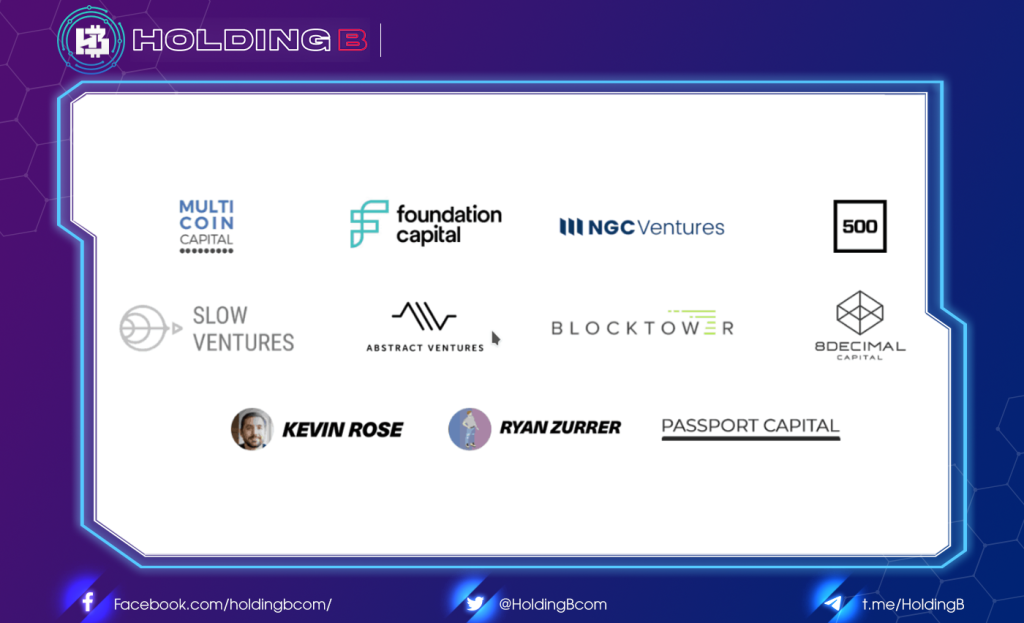
Many well-known names in the market have supported and poured capital into Solana such as Kosmos Capital, Passport Capital, Foundation Capital, Slow Ventures, Kevin Rose, Rockaway Capital, Coinlist, Block Dream Fund, .. and non-stop. out increase. Recently, Coin98, one of the leading cryptocurrency organizations in Vietnam, has cooperated to establish a $5 million investment fund to support developers in the Solana ecosystem in Southeast Asia. Thus, we can see that Solana is promoting the development model and is receiving the attention of organizations in the region.
Basic information about Solana
Token Name: Solana tokenTicker: SOLBlockchain: Solana.Token Standard: SPL.Token type: UtilityBlock time – System execution time: 400msAverage transaction time: 50,000 – 65,000 TPSTotal Supply – Total market supply: 1,000,000,000 SOLInitial Circulating Supply – Initial Circulating Supply: 500,000,000 SOLCurrent total supply – Circulating supply: 272,637,122 SOL (July 5, 2021)
How to buy and sell Solana tokens?
Currently, the Solana token is listed on 15 international exchanges.
You can buy SOL on CEX exchanges: Binance, Houbi, Hotbit, Gate.io, Bilaxy, Hoo, FTX….
Or Swap through common decentralized exchanges: Serum DEX, Raydium…
Defi on Solana
Before entering the article we need to understand what is DeFi ? Why is DeFi the most developed on Solana?
DeFi stands for Decentralized Finance – is decentralized finance (or open finance) in which institutions, markets, or financial instruments are managed decentralized. In simpler words, DeFi leverages the power of Blockchain to be decentralized and transparent to create an open financial platform, which anyone can access and use anywhere, anytime. which is not under the control of individuals or organizations with centralized power.
Currently, Defi has not stopped being hot and is leading in the market with many projects springing up like mushrooms. And on Solana too, a lot of projects have been built.
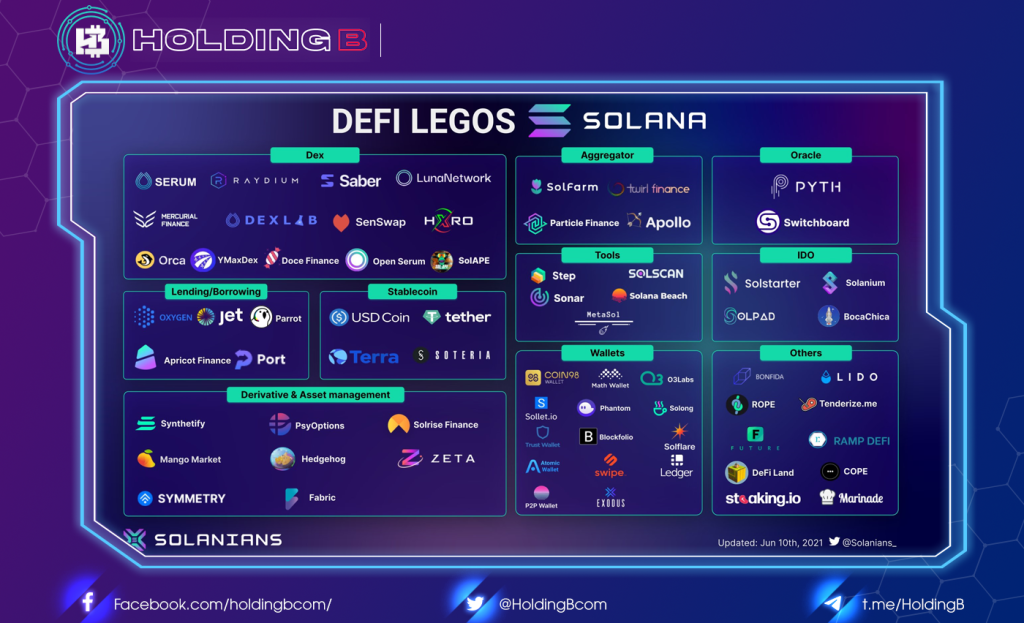
The Solana ecosystem has just been built, but with the rapid development, many projects have been born and gradually filled the gap in the ecosystem. Such a fast development speed is due to Solana’s advantages compared to other ecosystems (I have analyzed above) and the team of investment projects is quite good. Especially with the Solana Season Hackathon going on, it is certain that the number of new projects will continue to increase and expand the ecosystem.
DeFi is Solana’s main development area, and the number of development projects has increased sharply since the beginning of the year. Platform niches such as Dex, Stablecoin, Lending, Derivative, etc. all have projects and are under development.
DEX
DEX is divided into 2 main models, AMM and Order Book.
AMM
The first AMM to be on top of the Solana ecosystem is the Raydium project
Raydium (RAY) is one of the first decentralized exchanges (DEX) built on the Solana ecosystem. It can be said that Raydium is almost a copy of Uniswap V2 with many similar features. However, with mounting in a thriving ecosystem, Raydium will likely create many mutations in the field of decentralized trading.
This is a relative comparison table between Raydium and other AMM exchanges
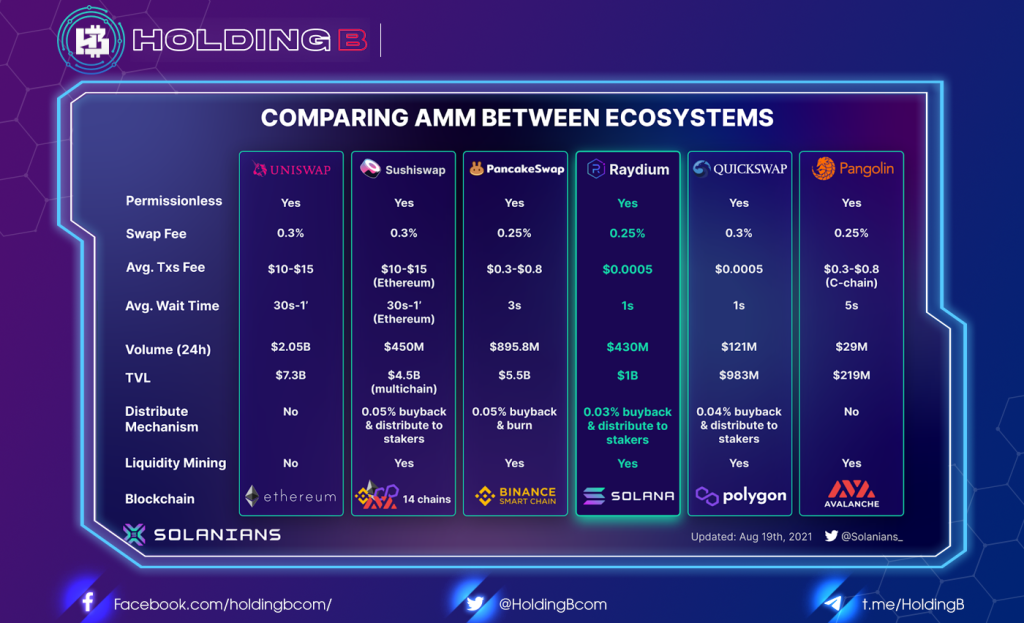
Overall, we can see the transaction fees and speed. Raydium seems to have no rival, it is far ahead of other projects such as Ethereum, Uniswap… As for the transaction volume, it is quite inferior to its seniors. ahead. This problem is because new Raydium is building and perfecting and another reason is that the liquidity of Raydium is still fragmented due to its combination with Serum.
By combining with reasonable Incentives (Liquidity Mining), Raydium is currently the AMM with the highest TVL on Solana (TVL 479.2M) but Raydium’s average daily transaction volume is also quite small, only about 50M. With the data above, we calculate the relative capital efficiency of Raydium AMM, which is quite low (Marketcap/TVL = 0.54) when compared to other AMMs.
This makes RAY’s Holder volume increase sharply and ranks TOP 1 in the Solana ecosystem
The second AMM project I want to introduce to you is Orca
Since Orca launched on January 25, 2021, Orca has received countless positive responses from the community. Orca operates on the Solana platform, so it also inherits the advantages of the Solana platform such as fast transaction speed, low fees, and simple operation.
Orca has a long-term strategy with the Defi platform, not simply considering DeFi as a trend, so currently, Orca has not launched its token.
The trading volume in the past 24 hours reached about 27.5M. The most traded currency pairs are USDT/USDC and ETH/USDC.
There are also other AMMs such as Serum Swap, Marinade, Doce, StableSwap … these projects are mostly new, so they have not yet developed or have no products.
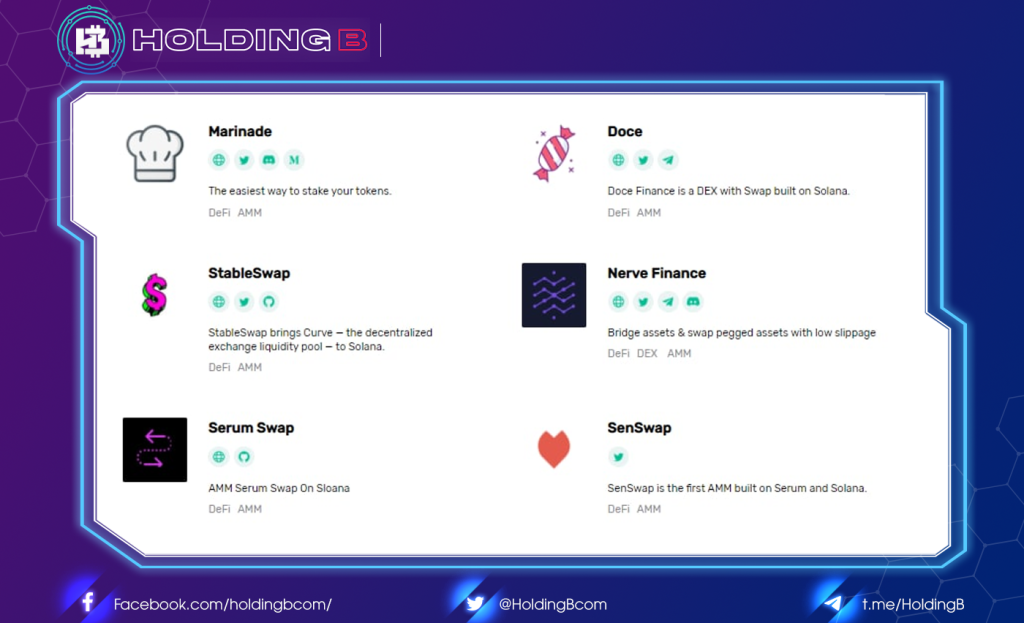
It can be said that liquidity is the most important concern in the Solana system at the moment. And the Sol system will likely have more strategies to attract liquidity shortly. Raydium’s cooperation to bring Sushi to Solana is a good example, which will help the user file of both sides increase and attract new cash flows to Sol.
Order Book
Serum Dex is the top 1 order book project on Solana.
Serum Dex is a decentralized exchange built on the Solana blockchain. Serum Dex uses the same Orderbook architecture as traditional Cex exchanges to help you have an easy-to-use experience and control your transactions.
According to current data, Serum Dex List 48 Crypto Assets with 83 trading pairs, the pair with the highest trading volume is SOL\USDC, and the Token with the most trading volume is the Stablecoin group (USDC, USDT).
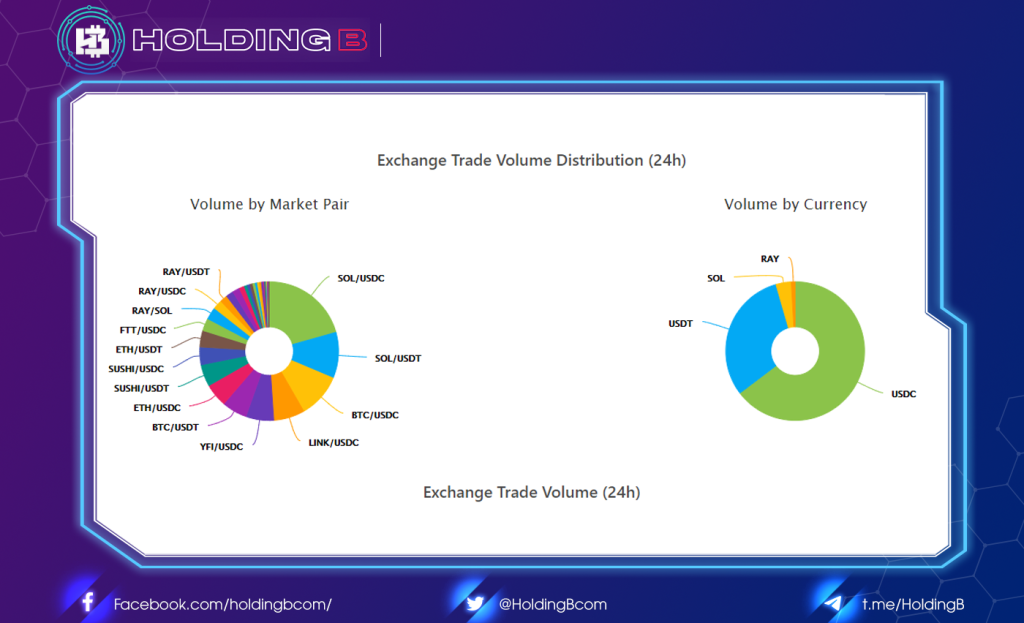
Serum DEX inherits and promotes features from AMM (Automated Market Maker) and allows you to conveniently place limited orders.
According to the report, the trading volume in the past 24 hours reached about ₿572.14 ~ 20M USDT. The average volume in the past 1 month fluctuates from 7 -> 33M USDT
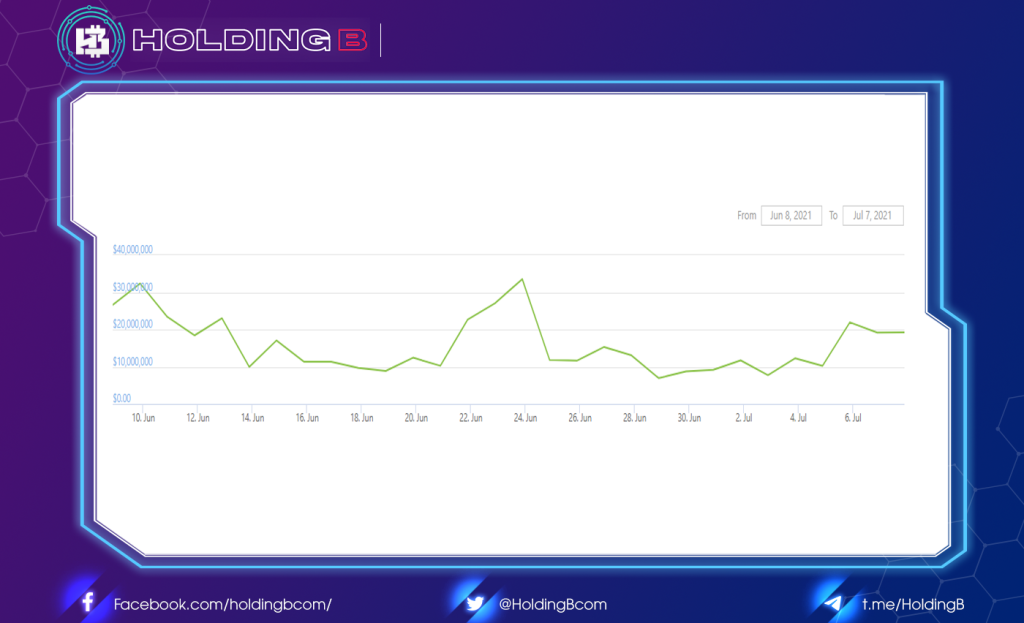
With a platform design that allows for synergies between projects to be developed on Serum Raydium, it is the Serum itself that benefits the most. With more and more projects developing in the Serum ecosystem, if successful, it promises to be an explosion of Serum in the future.
The next project in the DEX Order book is Bonfida
Bonfida is also an online DEX powered by Serum. According to the report the average daily volume reported on Bonfida is said to be around the $25M mark and the total volume since its initial launch late last year is reported to be over $2 billion.
In addition to the DEX, Bonfida plans to implement perpetual processes on-chain and allow traders to create custom automated trading strategies using BonfidaBots.
Lending & Borrow
Currently, in the Lending & Borrow segment, Oxygen is the most prominent name.
In Lending & Borrowing, Oxygen (OXY) is an intermediary protocol that supports DeFi projects, and also develops a decentralized wallet that supports Ethereum and Solana platforms.
An overview of today’s market for Oxygen
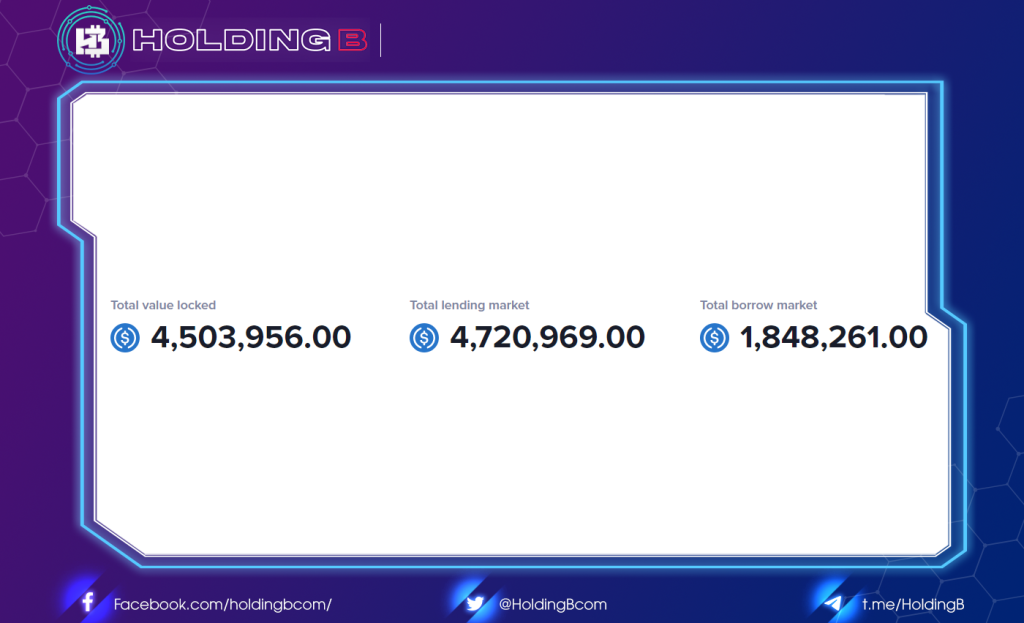
Total TVL on Oxygen reached ~ 4.5B USD, total loan ~ 4.7B, total borrowing ~ 1.9
Oxygen is a DeFi Prime Brokerage Protocol, a lending and borrowing service designed for “institutional investors”. Oxygen is inspired by similar products in the traditional financial sector. Oxygen is lending based on a “fund structure” similar to P2P. The protocol allows you to hold digital assets on your behalf, create liquidity, earn interest, borrow assets to sell short, and use leveraged trading based on an asset portfolio. The platform makes your property more efficient in 3 main ways:
Use the same collateral over and over: Oxygen allows you to generate returns on your portfolio by lending your property and borrowing other assets at the same time
Inter-chain collateral. With Oxygen, you can use all of your portfolios as collateral when you want to borrow other assets. This means lower liquidation/margin call risk for your portfolio.
• Market-based pricing. Oxy protocol is based on the order book (Order-book), which makes it possible to trade at the best/reasonable rates for borrowing/lending all the time.
In addition, there are many projects still under construction such as Solaris, Jet Protocol, Larix, Oyster, …
Lending & Borrow is under construction and finishing and hopefully, the end of the year will be explosive.
Stablecoins
Stablecoins are an important part of crypto, Stablecoins are the gateway to DeFi, from the growth rate of stablecoins, we can partly infer the growth rate in the ecosystem.
Looking at the growth rate of stable coins helps us somewhat determine the development level of the ecosystem and currently, the number of stablecoins on Solana is growing at a fairly fast rate.
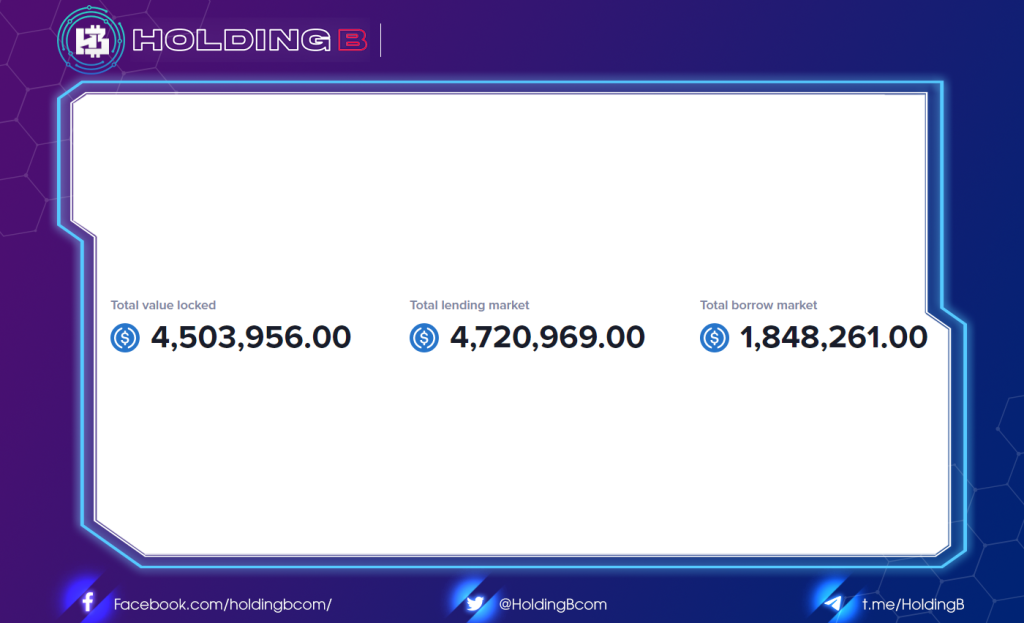
In just a few months, the total supply of USDC on Solana has increased more than 15 times, reaching $785 million, USDT also reached $190 million.
Considering the market share of both USDT and USDC markets, the above stablecoins are not large, but in terms of growth rate, Solana has also made a mark on the blockchain rankings.
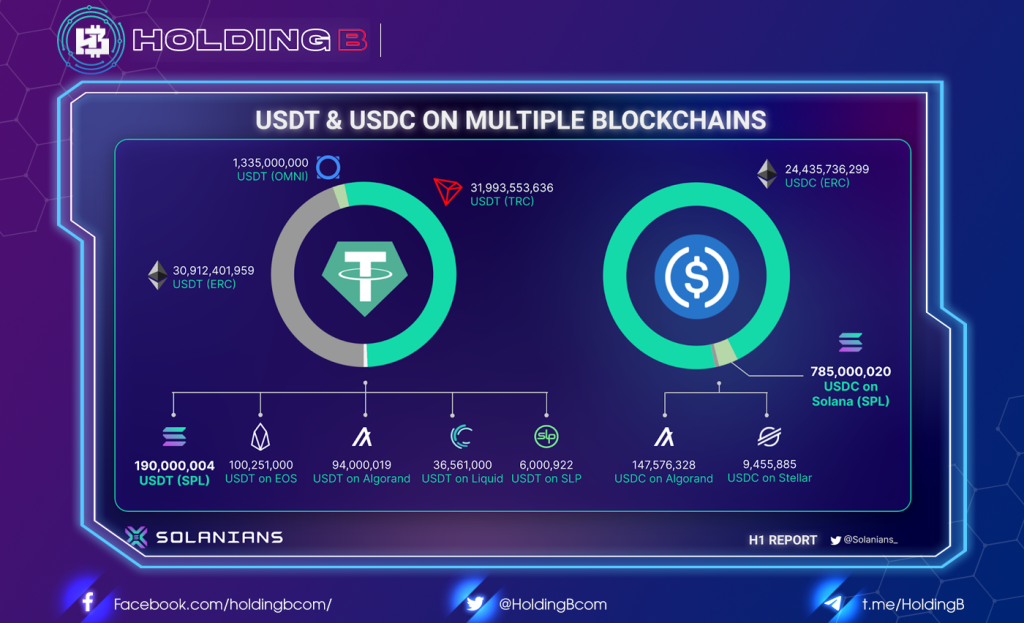
In just a few months, the total supply of USDC on Solana has increased more than 15 times, reaching $785 million, USDT also reached $190 million.
Considering the market share of both USDT and USDC markets, the above stablecoins are not large, but in terms of growth rate, Solana has also made a mark on the blockchain rankings.
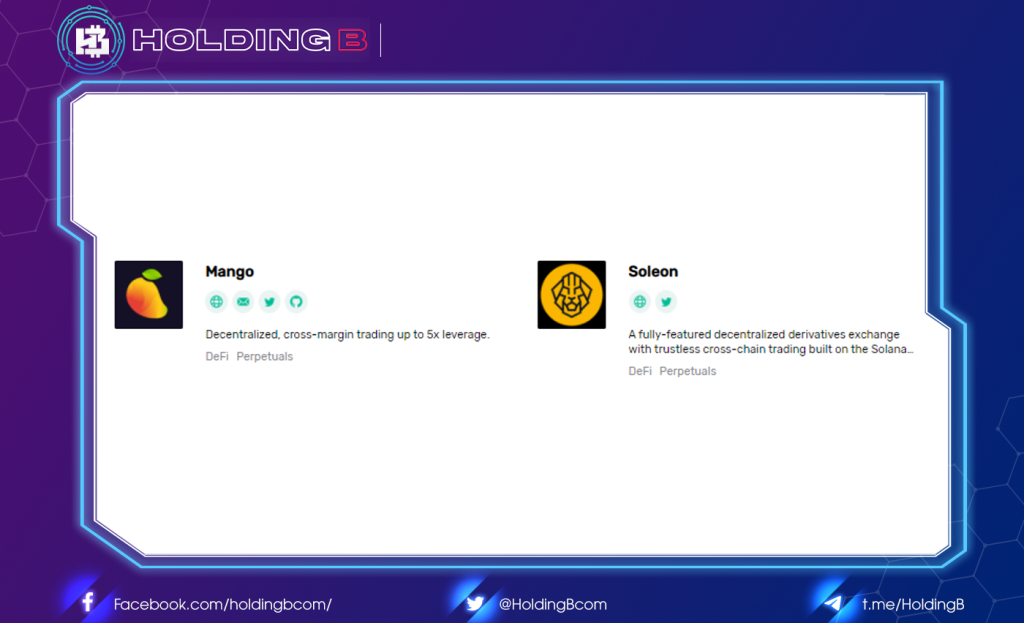
Mango and Soleon are 2 derivative projects on Solana. Compared to other projects outside the network, the volume of the two projects is still quite low. But as I have analyzed, it will take a Lending Protocol for the derivative puzzle to explode.
Others
With the other pieces will two types:
Platform pieces such as Oracle, vault.
Puzzle pieces in higher layers: Aggregator, Asset Management.
I see more potential in the foundation layer than in the projects in the higher layers, because the cash flow only gradually increases when it is filled in the lower layers.
Currently, the number of projects coming to the mainnet is also very small and it is difficult to evaluate at present.
Conclude
Based on the puzzle pieces and current figures, we can see that Solana is pushing to attract builders to develop a full ecosystem and retain users. DeFi will certainly be the central development arm of Solana and investment opportunities will likely be concentrated here.
In general, not only DeFi, the entire Solana ecosystem is thriving due to the interest from the community. With the advantage of transaction speed and low cost, Solana is attracting a lot of new projects. With an experienced team and a well-known Investor array in the market, Solana is gradually occupying its position.
See ya in the next article !
Don’t forget to follow useful articles about Crypto Market from team Holding B !!!
- Telegram Channel: https://t.me/HoldingBcom
- Telegram Group: https://t.me/HoldingB
- Website: https://holdingb.com/
- Twitter: https://twitter.com/HoldingBcom
- Facebook: https://www.facebook.com/holdingbcom


